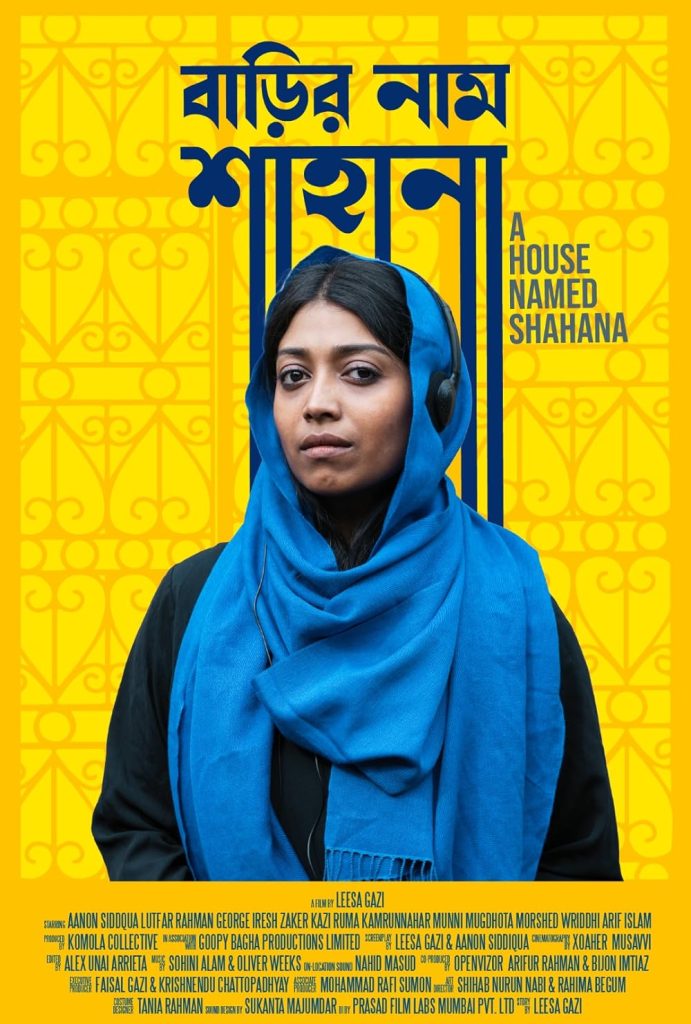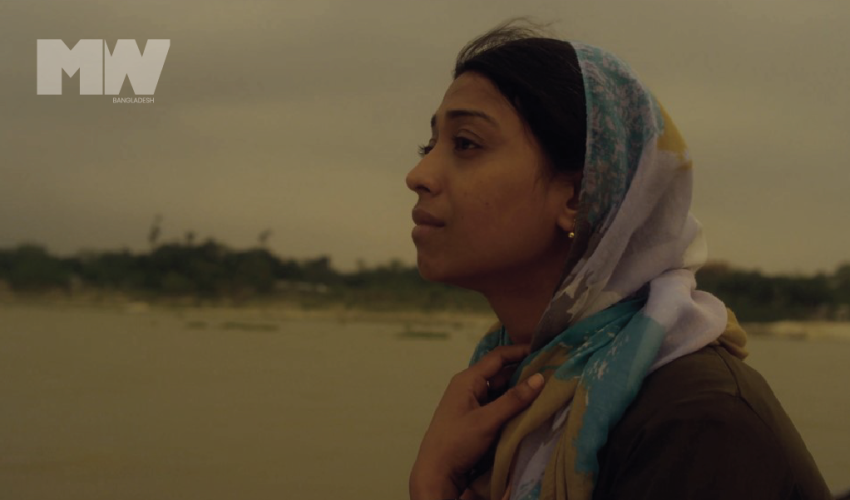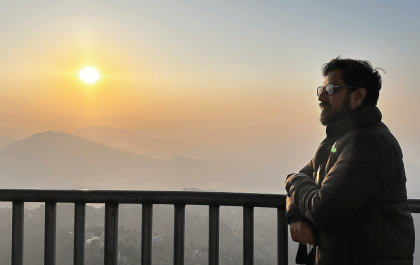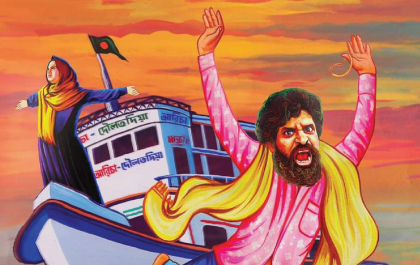Leesa Gazi’s debut feature film Barir Naam Shahana is a tour de force
Usraat Fahmidah
One of the films I was excited about screening at this year’s edition of the Dhaka International Film Festival was Leesa Gazi’s feature film Barir Naam Shahana. Eager to catch the premier show in Bangladesh, I found myself on a crowded metro on a weekday evening making my way to the other side of the city without any clue whatsoever of how I was going to return home after the screening late at-night.
Having read Leesa Gazi’s spine-chilling novel Hellfire, I was particularly thrilled about her venture into the world of feature films, especially after seeing this film’s positive review online. The commute was a risk, but I couldn’t miss the screening. Fortunately, I left the screening hall without any regrets, as Leesa Gazi’s feature film lived up to expectations and didn’t disappoint.
Taking place in a rural town in 1990s Bangladesh, the story centers around a young woman named Dipa, who grapples with the challenges associated with being a divorcée. Co-written with Aanon Siddiqua, the Bangladeshi artist who plays the protagonist Dipa, Leesa Gazi’s script is almost flawless.
Produced by Komola Collective in association with Goopy Bagha Productions Limited, it’s worth noting that Barir Naam Shahana is Leesa Gazi’s debut feature film.
The film features a stellar cast which include Iresh Zaker, Kazi Ruma, Kamrunnahar Munni, Mugdhota Morshed Wriddhi, Naila Azad, Arif Islam, Naimur Rahman Apon, and Jayanto Chattopadhyay, Lutfur Rahman George, and more.
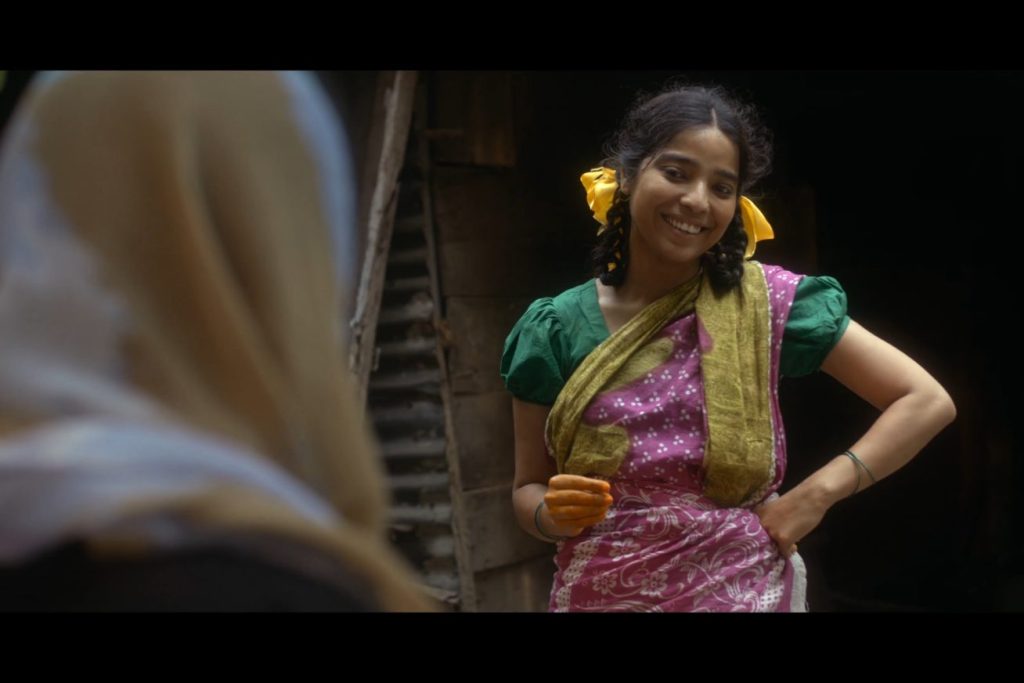
Aanon Siddiqua, the London-based Bangladeshi artist, brings an extra dimension of skill and artistry to portraying the main character Shahrin Munshi Dipa through her theatrical and musical skills, elevating the on-screen performance.
As the plot unfolds, viewers are taken on a journey that explores the dynamics within the Shahana household. Married off to a widower in the UK by her uncle, who deems her life lacking value being an orphan, Dipa encounters a harsh reality upon reaching the small village in the UK. Discovering that her husband is significantly older in age, young Dipa is coerced into changing her clothing, lifestyle, and even taking up the task of performing Islamic rituals for washing dead bodies against her will. Her life abroad reeks of misery isolated from her family, and enduring an abusive marriage. She then runs away without telling anyone with the help of a kind lady next-door who helps her purchase a flight ticket to Bangladesh.
After coming back to Bangladesh, Dipa stands up for herself, determined to live life according to her own choices. She opts to pursue a degree in medicine and ultimately achieves her goal of becoming a doctor. However, she still doesn’t get to live life on her own terms as the divorcée label continues to plague her life.
In one of the scenes, following Dipa’s divorce, her uncle arranges for an ojha to visit Dipa’s home because they believe she is under the influence of a djinn, and needs to be exercised. The scene stuck with me.
The irony lies in the notion that a woman asserting her desire for independence is considered possessed or even mentally ill in our society, highlighting the societal resistance women face when pursuing their own aspirations. These little additions to the plot are what made the film so authentic in terms of portraying the complex ways societal norms and expectations often constrain women.
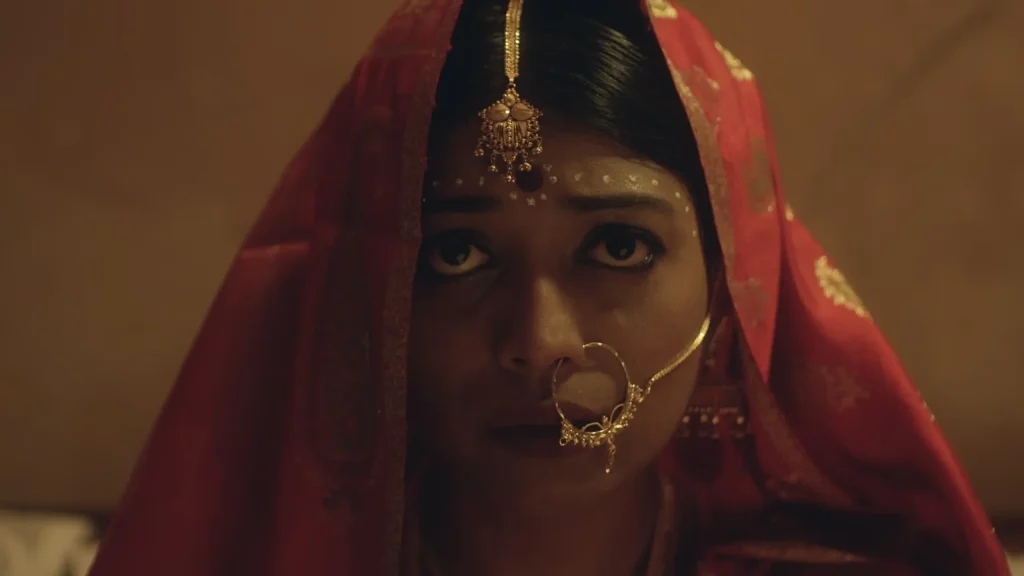
The irony lies in the notion that a woman asserting her desire for independence is considered possessed or even mentally ill in our society, highlighting the societal resistance women face when pursuing their own aspirations
In the end, Dipa finds herself rescuing a young girl named Pori from the predatory ojha who exploits Pori for his fictitious rituals, just like the way a kind neighbor had helped her escape her abusive marriage in the UK. Then, when Dipa decides to not remarry and adopt the child Pori, it angers her family.
I thoroughly enjoyed Iresh Zaker’s portrayal of Shukhomoy, another character in the film. Unlike assigning him the conventional role of a savior rescuing a damsel in distress, the character is intricately crafted to be independent and serves as a perfect complement to the main character. There is a deliberate departure from clichéd roles, and Shukhomoy proves to be a refreshing addition, not overshadowing Dipa’s story. The performances by the cast bring the characters to life, adding depth and authenticity to the story-telling. In some ways, the film’s theme of sisterhood touched me.
In January, when I got to catch-up with Bangladeshi author Tahmima Anam, she had said that Leesa Gazi’s Hellfire is one of the best books to have come out in the last decade out of Bangladesh that showcases a different side to the lives of women, often untold. Leesa Gazi has already proved her writing prowess with Hellfire, and with this film she proves again that she’s a master story-teller. She has carved out a space for herself with her body of work, sharing the interior of women’s lives with the audience in a way that is unparalleled.
Uplifting, moving, and lightly comic, Barir Naam Shahana is worth the watch. The film seamlessly weaves together a heart-warming narrative with moments of genuine emotion and subtle humor that moves the audience. The film truly delivers, and the ending leaves you in tears as Dipa finally breaks free, and decides to live her life on her own terms.
